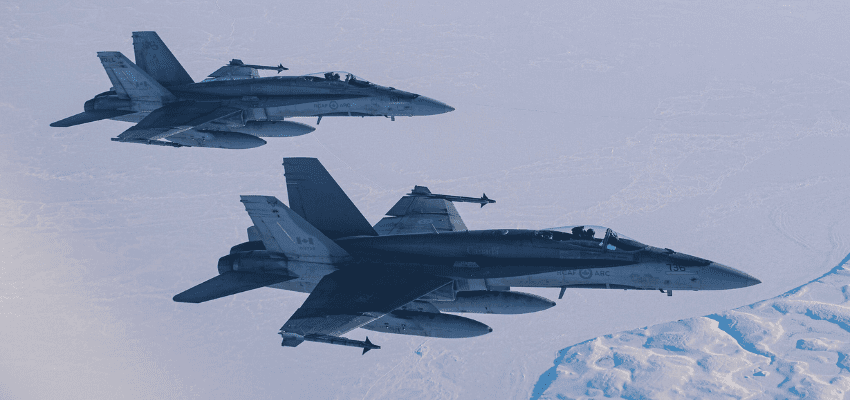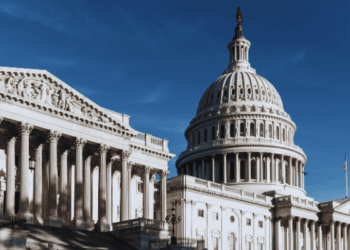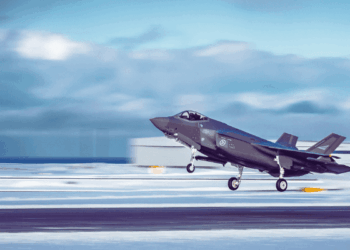This article originally appeared in 19FortyFive.
By Christopher Coates and Jamie Tronnes, April 22, 2025
In a speech to Canada’s Parliament in 1936, Prime Minister William Lyon Mackenzie King stated, “It is our duty, as well as our interest, to make it manifest that we will never be found among the number of those nations that menace the peace and security of the United States.”
This is as true today as it was then. It is forever in Canada’s best interest to be a reliable partner in ensuring the peace and security of the United States. For more than 65 years, Canada and the United States have defended their nations from external threats through the North American Aerospace Defense Command (NORAD).
NORAD Must Evolve
NORAD has evolved – from dealing with Soviet bombers, to defending against cruise missiles, to responding to terrorist and unconventional threats over our homelands. But, as noted by General Glen VanHerck, NORAD’s previous commander, NORAD’s “defensive capabilities have not kept pace with the threat.”
In simple terms, NORAD can no longer effectively detect and destroy adversaries’ modern weapons. Canada and the United States are not well defended.
U.S. President Donald Trump’s tariff threats and annexation jokes have stirred up a national anti-America sentiment in Canada that undermines the relationship. Rumors that Trump has considered cancelling NORAD further hurt the possibility of effective cooperation. A recent poll found that 27 percent of Canadians view the United States as an “enemy nation.” Trump’s provocations and Canada’s hurt feelings present a real challenge to the special binational relationship under NORAD.
But Canada’s geographic position between the United States and her principle threats means NORAD must be at the center of both nations’ defense and deterrence strategies. Canada is the first line of defense against polar incursions by air, ice, land, or sea. Canada and the United States have a stake in one another’s security as a matter of geographical fact, and this will not be undone by temporary political friction.
In light of this, what does Canada need to do to ensure that NORAD remains effective and to assure a skeptical American president that Canada is a strong security partner? What are the modern threats that NORAD must improve its capabilities to meet?
As General VanHerck indicated, NORAD’s defenses have not grown to cover the range of threats facing the United States and Canada. These include advanced missiles launched from the air, ships, submarines, or ground launchers. These missiles have advanced navigation capabilities and greater range; they are equipped with electronic-warfare measures and stealth-like characteristics; in the case of hypersonics, they achieve much higher speeds.
Russia also threatens the United States with ballistic missiles, which can be launched from Russian territory or from ships and submarines. Those missiles would also pass over Canada and are the reason that NORAD performs a missile-warning role.
The maritime and submarine threats include both cruise and ballistic missiles. While NORAD ensures air defense against cruise missiles and plays a role in maritime warning for both Canada and the United States, fully countering these threats goes beyond air defense and maritime warning. It also includes maritime operations and ballistic-missile defense.
Sino-Russian cooperation, as seen in joint patrols of ships and aircraft on the fringes of U.S. and Canadian territory, is another emerging threat to North American security. In addition, there are also real threats posed by disinformation and other types of hybrid warfare.
The target sets have also evolved. Russia has demonstrated a willingness to target civilian populations and infrastructure, and as resources and supply chains in the two countries remain integrated, Russia could target Canadian infrastructure to wreak havoc in the United States. Securing Canada means securing the United States’ northern flank and is critically important to the defense of all of North America.
The Trump administration has taken these growing threats very seriously, leaning into improving the defenses of the United States, including through the executive order to build the Iron Dome for America.
As for Canada, it has been long known as the ugly stepchild of military spending in the alliance. U.S. House Speaker Mike Johnson famously derided Canada for “riding America’s coattails” on defense. Canada’s way ahead to improve its defense posture must start with significant and effective contributions to NORAD.
As a first step, Canada should rapidly deliver on its NORAD modernization program.
The program itself is sound and prioritizes valuable capabilities that are badly needed to defeat threats and deter adversaries. The plan lays out improvements to NORAD’s sensors, including new powerful over-the-horizon radars, as well as other classified and space-based sensor capabilities. The program provides greater airborne capabilities, such as modern air-to-air missiles and refueling aircraft; better infrastructure, such as hangars, runways, and structures to allow NORAD to operate in and from Canada’s Arctic; and communication systems that link Canadian NORAD operators to decisionmakers in Canada and the United States.
For these NORAD modernization initiatives, Canada announced a $4.6 billion investment in 2022 to update its NORAD capabilities, with an additional $36 billion to be paid over the next 20 years. A part of this was the recently announced over-the-horizon radar, a $6 billion investment.
While these are capabilities that are needed today, the programs as outlined won’t see delivery of many of these modernizations until 2030 and beyond. These timelines are simply not effective for NORAD to deter emerging threats. By 2030, NORAD will once again be “shooting behind the duck” – our adversaries will likely have adapted their capabilities, rendering defenses ineffective, once again.
In the past, Canada could count on a whole-of-department approach, led by the Privy Council Office, to fast-track procurement of key defense assets. This was the case, for example, when Canada was called on to scale-up to fight alongside the United States in Afghanistan.
While this method of procurement is not sustainable for modern defense programs, which are iterative and adaptive, it does demonstrate that the government of Canada can accelerate the acquisition process when urgently required. Whether Canada’s next prime minister is Mark Carney or Pierre Poilievre, he should immediately prioritize the accelerated development of NORAD’s operating capabilities and capacity commitments. Recognizing the failures of the current procurement and acquisition processes, the new government needs to disconnect NORAD modernization from overly bureaucratic and risk-averse legacy processes, and commit to delivering capabilities with the utmost speed.
Beyond accelerated NORAD modernization, Canada must participate in the ballistic-missile defense of North America. Whether in the context of 21st-century Integrated Air and Missile Defense, or with the advent of programs like Iron Dome, Canada must participate in the ballistic-missile defense efforts that will allow NORAD to remain relevant. A new Canadian government needs to appreciate the changing geopolitical environment, the reality of the evolving threats, and the seriousness of defense requirements, and get on board with ballistic-missile defense.
In a world of evolving threats, it is no longer satisfactory to update NORAD once every 40 years. A failure to continuously modernize NORAD would create a contemporary version of the Maginot line, the illusion of a defensive barrier. Canada needs to implement strategies that will provide the commander of NORAD with the resources necessary to maintain a sufficient level of deterrence and protection – and reassure the United States that Canada is serious about its defenses.
Canada and the United States do something that is unique in the world through NORAD. But NORAD must meet the threats that adversaries actually present. Our governments need to provide NORAD the ability to catch up and then to position itself for the future, deterring and defeating threats to Canada and the United States and their national interests. The United States is doing this with the Iron Dome initiative. Canada could do it by accelerating the delivery of NORAD modernization and adopting a strategy for its continual evolution, and by participating in the missile defense of North America.
If Canada’s next prime minister fails to quickly modernize NORAD, he will fail in his fundamental responsibility to uphold Canadian sovereignty, and will further violate the principle outlined by Prime Minister King in 1936: that Canada should never be the source of insecurity, or a threat to the peace of America.
Lieutenant-General (ret.) Christopher Coates is the director of Foreign Policy, National Security and National Defense at the Macdonald-Laurier Institute. He is the former Deputy Commander of NORAD.
Jamie Tronnes is the executive director of the Center for North American Prosperity and Security (CNAPS) in Washington DC.








